#lord dunsany
Note
I'm pretty sure you reblogged this before but searching your blog for "Rogue" gives Star Wars and video games so I'm not seeing it, but do you remember a short story that was supposed to be like the inspiration for the archetypical DnD Rogue? It was how professional/invisible they were and sadly having trouble finding it again.
In terms of media inspirations, the most direct prototype of the Dungeons & Dragons rogue is almost certainly Fritz Leiber's Gray Mouser, with a dash of Jack Vance's Cugel the Clever for flavour. Basically every D&D character class – at least among those which appear in the game's earliest editions – is name-checking specific characters from 1960s or 1970s popular media, so that's the era you want to hit if you're trying to trace their origins.
However, if we allow indirect inspirations as well as direct ones, one of the earliest media incarnations of the archetype that would become the D&D rogue – and the one I suspect you're thinking of – is without a doubt Lord Dunsany's Nuth. He turns up in the short story "How Nuth Would Have Practised His Art Upon the Gnoles" in the 1912 anthology The Book of Wonder; you can find Project Gutenberg's online text here:
https://www.gutenberg.org/files/7477/7477-h/7477-h.htm#HOW_NUTH_WOULD_HAVE_PRACTISED_HIS_ART_UPON_THE_GNOLES
#gaming#tabletop roleplaying#tabletop rpgs#dungeons & dragons#d&d#history#media#literature#lord dunsany
307 notes
·
View notes
Text
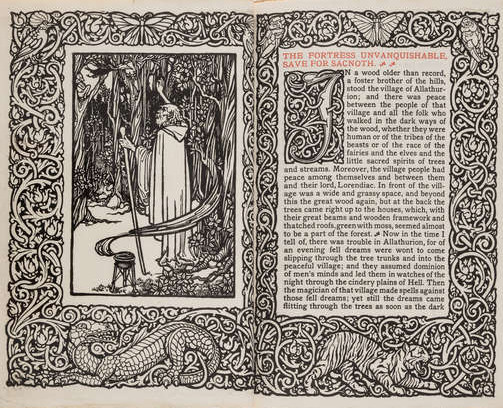
In 1908, early Fantasy fiction pioneer and chessmaster Lord Dunsany published his best story, "The Fortress Unvanquishable, Save for Sacnoth."
Arriving on the tail of a recently arrived comet, the evil sorcerer Gaznak raised his impossible fortress. The only way to get through it is with the sword Sacnoth, which can only be obtained by killing the dragon-crocodile Tharagavverug in the swamps surrounding it. The hero ventures into the impossible fortress, and the mere name of the sword Sacnoth is usually enough to make the wizard Gaznak's forces, like camel-riding warriors and undead women, recoil.

Many historians, like Fritz Leiber, call "The Fortress Unvanquishable, Save for Sacnoth" to be the first Sword & Sorcery story ever written.
230 notes
·
View notes
Text
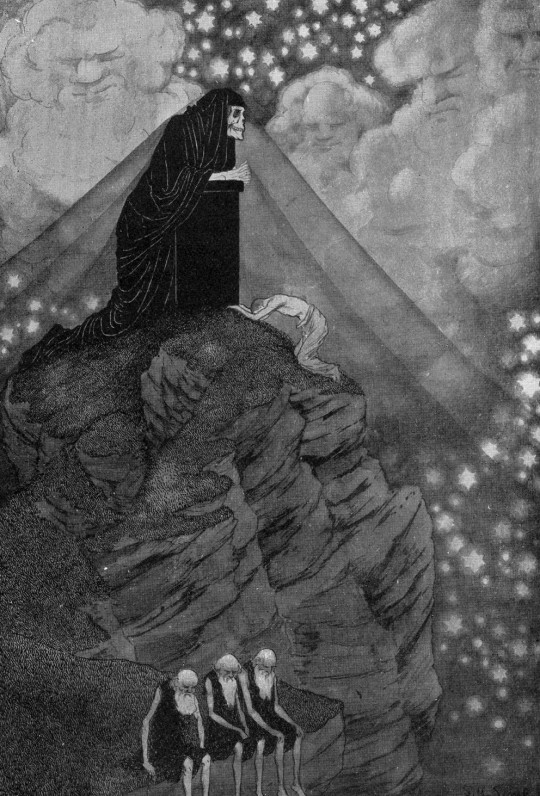
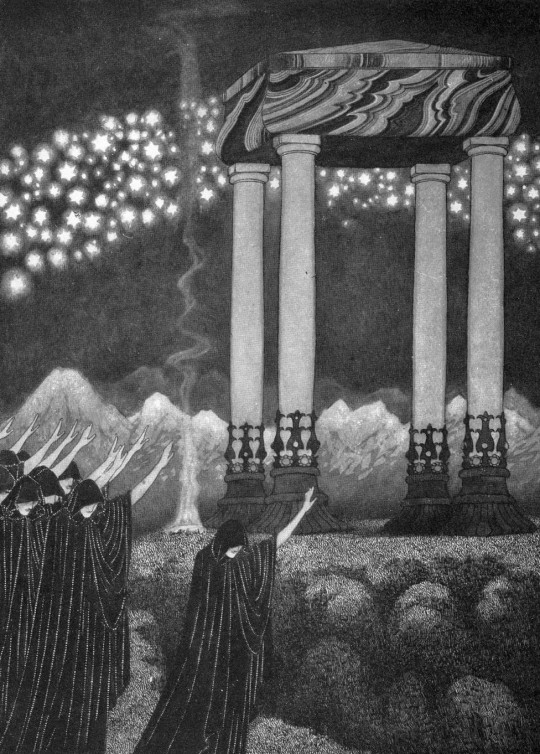

Illustrations from Lord Dunsany's Time and the Gods by Sidney Sime (1906)
#sidney sime#art#illustration#golden age of illustration#1900s#1900s art#vintage art#vintage illustration#vintage#english artist#british artist#books#book illustration#fantasy#fantasy art#lord dunsany#classic art
750 notes
·
View notes
Photo

From Lord Dunsany's book :
'The Sword of Welleran and Other Stories', illustration by Sidney Sime, 1917
771 notes
·
View notes
Text
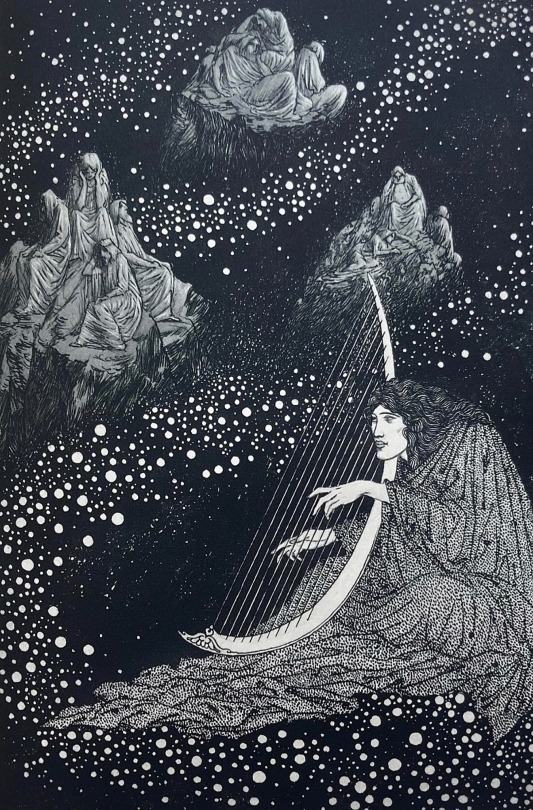
Time and the Gods by Lord Dunsany
1922
Artist : Sidney Sime
1K notes
·
View notes
Text

Lord Dunsany, The King of Elfland's Daughter
70 notes
·
View notes
Photo
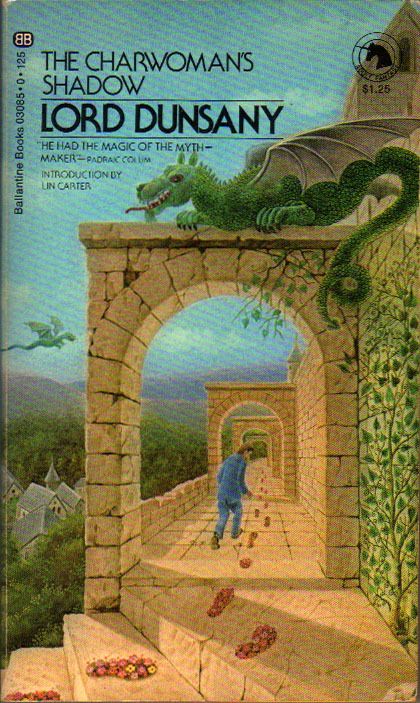
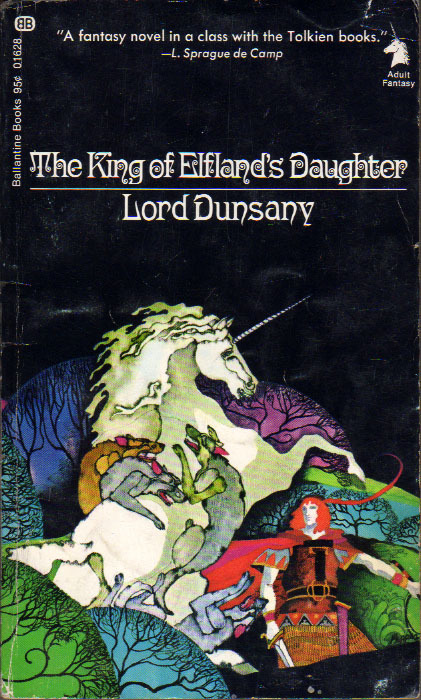
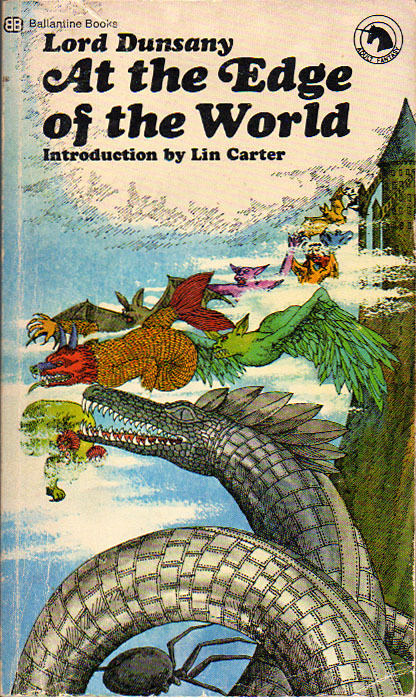
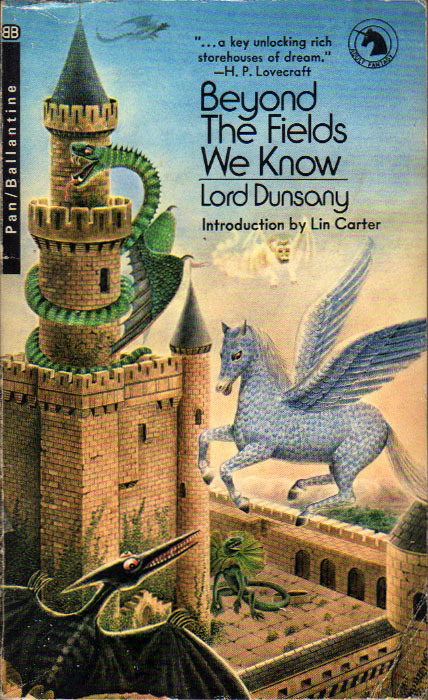


Vintage paperback editions of Lord Dunsany’s works from Ballantine Books.
507 notes
·
View notes
Text
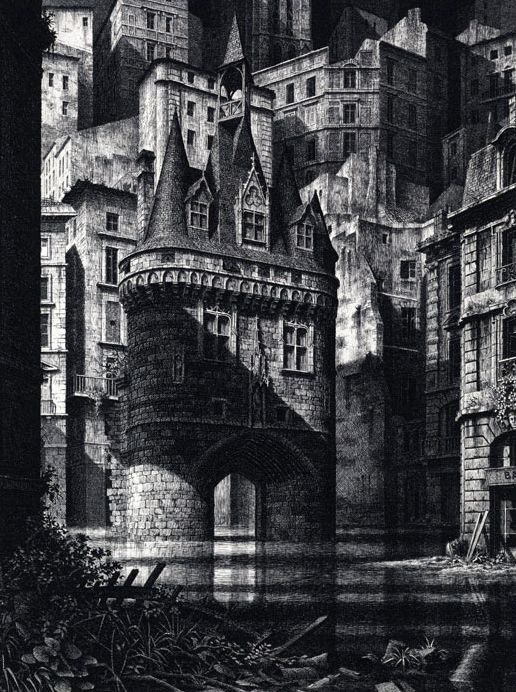
“Ivy dreams sullenly and alone of overthrowing the cities.”
Lord Dunsany, The Blessing of Pan
Art: Castle by Gerard Trignac
#art#dark academia#dark aesthetic#classic literature#illustration#darkacademia#architecture#fantasy architecture#etching#gerard trignac#lord dunsany
159 notes
·
View notes
Text
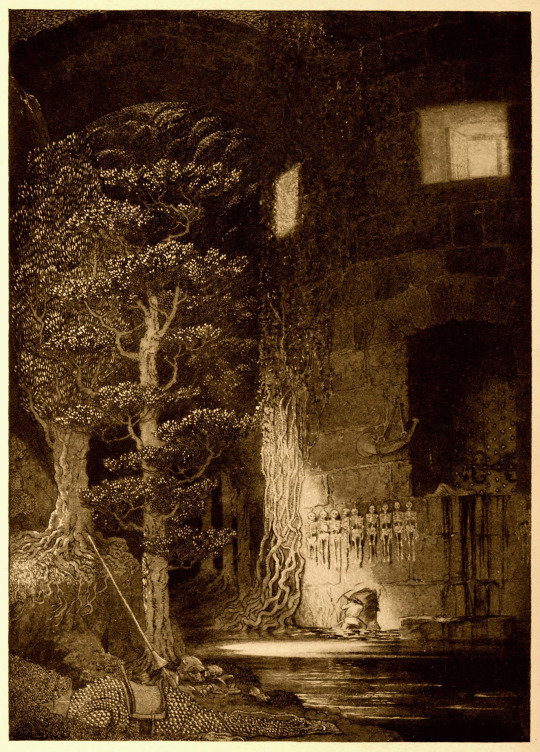
“There the Gibbelins Lived and Discreditably Fed” by Sidney H Sime, from Lord Dunsany’s story “The Hoard of the Gibbelins” in The Book of Wonder, 1912. This is the tale of a knight who becomes obsessed with seeking the treasures of some man-eating creatures who live at the edge of the world. “Alas that I should say of so perilous a venture, undertaken at dead of night by a valorous man, that its motive was sheer avarice!”
The next story in the this collection is “How Nuth Would Have Practised His Art Upon the Gnoles” in which two thieves go into the gnoles’ forest to steal their emeralds.
Lord Dunsany’s most important influence on D&D probably isn’t his vaguely described fairy tale monsters, but his greedy human characters who travel to the homes of nonhuman creatures to steal from them, often coming to a bad end. D&D originally awarded characters 1 experience point per 1 gold piece looted, as well as for defeating monsters, prompting players to follow the examples of Lord Dunsany’s adventurous thieves and seek ever greater riches in more dangerous lairs.
#Lord Dunsany#Sidney H Sime#D&D#Appendix N#Dungeons & Dragons#The Hoard of the Gibbelins#The Book of Wonder#dnd#fantasy#gaming history#Dungeons and Dragons#castle#skeletons#dragon#tower#monster mount#There the Gibbelins Lived and Discreditably Fed#gibbelins
502 notes
·
View notes
Text

The Tomb of Zai, illustration by Sidney Sime for Lord Dunsany’s Time and the Gods (1906)
824 notes
·
View notes
Text
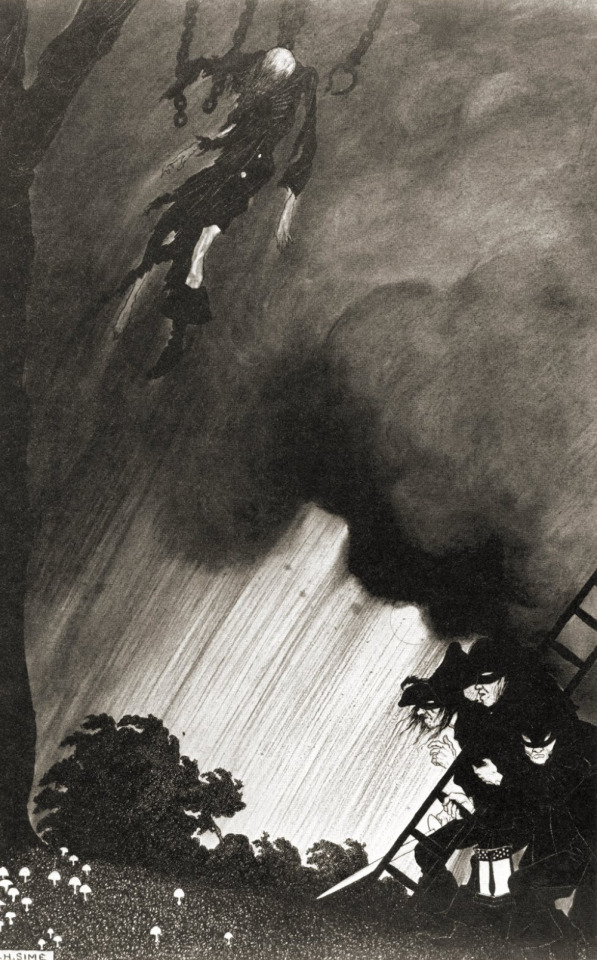
Sidney H. Sime - Tom o' the roads
illustration from Lord Dunsany's The Highwaymen, 1908.
108 notes
·
View notes
Text
Sometimes I feel like something gets lost in translation when the English subtitles for Pan's Labyrinth refer to the fairy kingdom as the "underworld" (or the "Underground Realm," in the opening narration).
In one of the pages of Guillermo del Toro's notebooks featured in his book Cabinet of Curiosities, there's a note made by del Toro about beings called the "Mouros," said to live in underground cities. Del Toro goes on to note that in Galicia (where Pan's Labyrinth is meant to be set), it is believed that the mountains are hollow and contain underground realms and cities. So this is clearly what del Toro used as inspiration for the backstory involving the missing princess.
It's also interesting how the motion comics included in the DVD/Blu-Ray release of the film refer to the fairy kingdom as "Bethmoora," a place mentioned in Lord Dunsany's works (and, also, the name del Toro gave to the kingdom of the elves in Hellboy 2).
#pan's labyrinth#guillermo del toro#mouros#galicia#fairies#fair folk#hellboy 2#bethmoora#lord dunsany#text#random thoughts
66 notes
·
View notes
Photo

Illustration from Lord Dunsany’s A Dreamer’s Tale by Sidney Herbert Sime (1910)
#sidney herbert sime#art#illustration#golden age of illustration#1910s#1910s art#vintage art#vintage illustration#vintage#english artist#british artist#books#book illustration#fantasy#fantasy art#sidney sime#lord dunsany#classic art
2K notes
·
View notes
Photo

Ιllustration for Lord Dunsany's "The Bird of the Difficult Eye" from the Last Book Of Wonder, 1916
by Sidney Sime
2K notes
·
View notes
Text

THE LITTLE TALES OF SMETHERS AND OTHER STORIES by Lord Dunsany (London: Jarrolds, 1952) Dust jacket design by Val Biro.
Twenty-six mystery and detective stories, including the much-anthologized “The Two Bottles of Relish”, with its neat and devastating one-sentence solution at the end.
source
#book blog#books#books books books#book cover#mystery#lord dunsany#val biro#detective stories#book design
39 notes
·
View notes
Text

vote yes if you have finished the entire book.
vote no if you have not finished the entire book.
(faq · submit a book)
14 notes
·
View notes